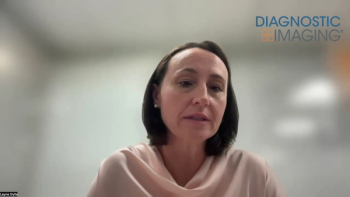
Social Media Matters for Radiologists
CHICAGO - Radiology practices should establish a presence on sites like Facebook, LinkedIn and Twitter. Here’s why.
CHICAGO - Social media outlets such as Facebook, Twitter and LinkedIn have grown to be incredibly influential in business and personal lives, but are they really the place to be for diagnostic imaging practices?
A vast majority of practices say “yes.” During an interactive session at RSNA 2013, nine out of 10 (91.7 percent) participants agreed practices should have a presence on social media. And with that involvement could come criticism.
The chatter generated on the social media can have “more impact on your practice’s reputation than your best marketing efforts,” said speaker Abraham Seidmann, PhD, a professor at the University of Rochester’s Simon School of Business in Rochester, NY. “Eighty-two percent of patients say that online reviews affect their decision to visit a doctor. Why do they rank us? Sometimes because they’re happy and sometimes because they’re not. You have to monitor your comments from the outset.”
With its “Like” and comment functions, Facebook has become a key platform for reviewing medical providers, alongside general ratings sites such as Yelp! and healthcare-focused resources such as ZocDoc. “Many patients already use social media to share and rate their experiences with healthcare,” Seidmann said. “Public ratings have become important differentiators among healthcare organizations and providers.”
And while the power of a review declines as it ages, 91.8 percent of attendees agreed that negative reviews have much more impact than positive ones.
In many cases, Seidmann said, social media corrects what might be considered failures in the offline world. For instance, social media makes what otherwise might be challenging tasks such as keeping up with old friends, networking and looking for work simple. “Say you want another job,” Seidmann said. “One alternative is that you come to RSNA and give out your business card, and your boss asks you about it later. The other alternative is LinkedIn.”
A company can take one of two digital strategies on an outlet like Facebook, Seidmann said. It can set up a static company or “brand” page that potential customers can seek out. But, he noted, few people wake up and say, “What a great day! I think I’ll look for a good radiologist.” The other alternative is social strategy that uses a platform such as Facebook Connect to improve existing relationships and build new ones.
Once a presence is established, new analytical software technologies can identify positive and negative reviews from common keywords to determine how one’s reputation stacks up, and as established leaders in records management and diagnostic software use, radiologists are well-positioned to take advantage of such technologies. “We can and should use big data and social media at our healthcare organizations to better serve our rapidly growing, global patient population,” Seidmann said.
“Can online comments predict patient satisfaction?” he asked. “Yes. One big-name physician got bad reviews for his bedside manner and had to leave his practice. It’s not the outcome - it’s how a patient feels about the outcome.”
Newsletter
Stay at the forefront of radiology with the Diagnostic Imaging newsletter, delivering the latest news, clinical insights, and imaging advancements for today’s radiologists.




























